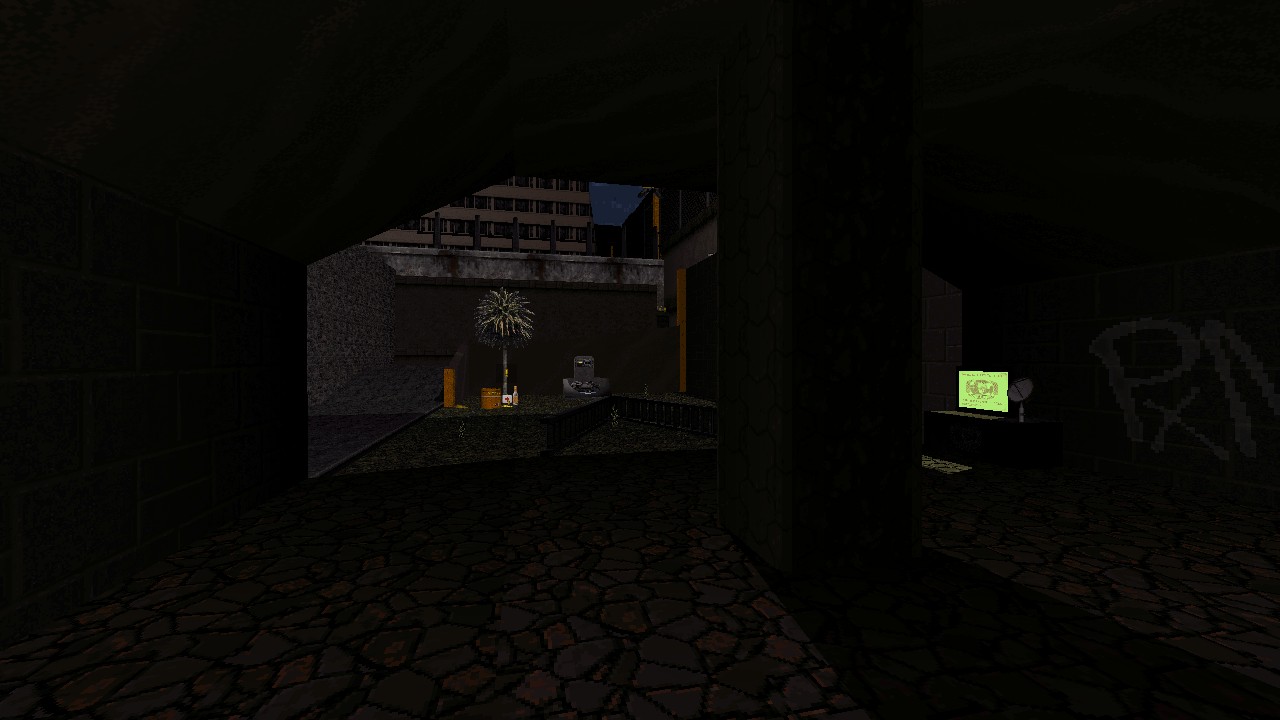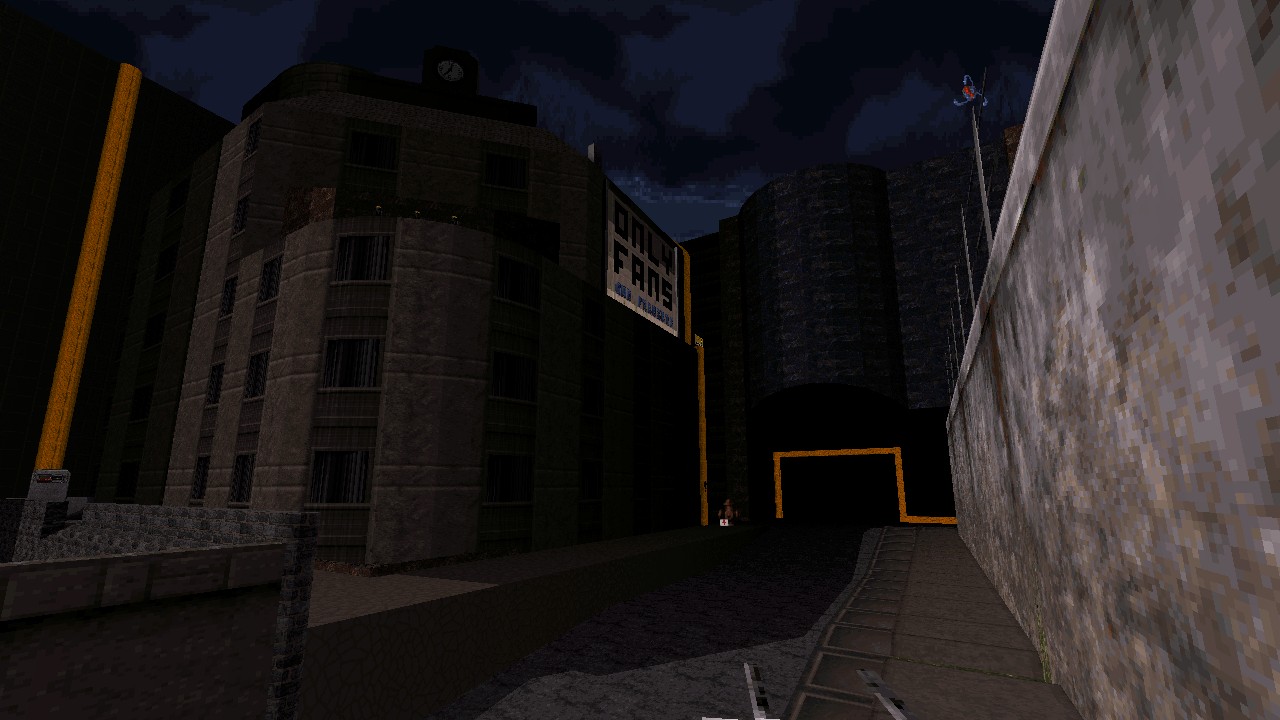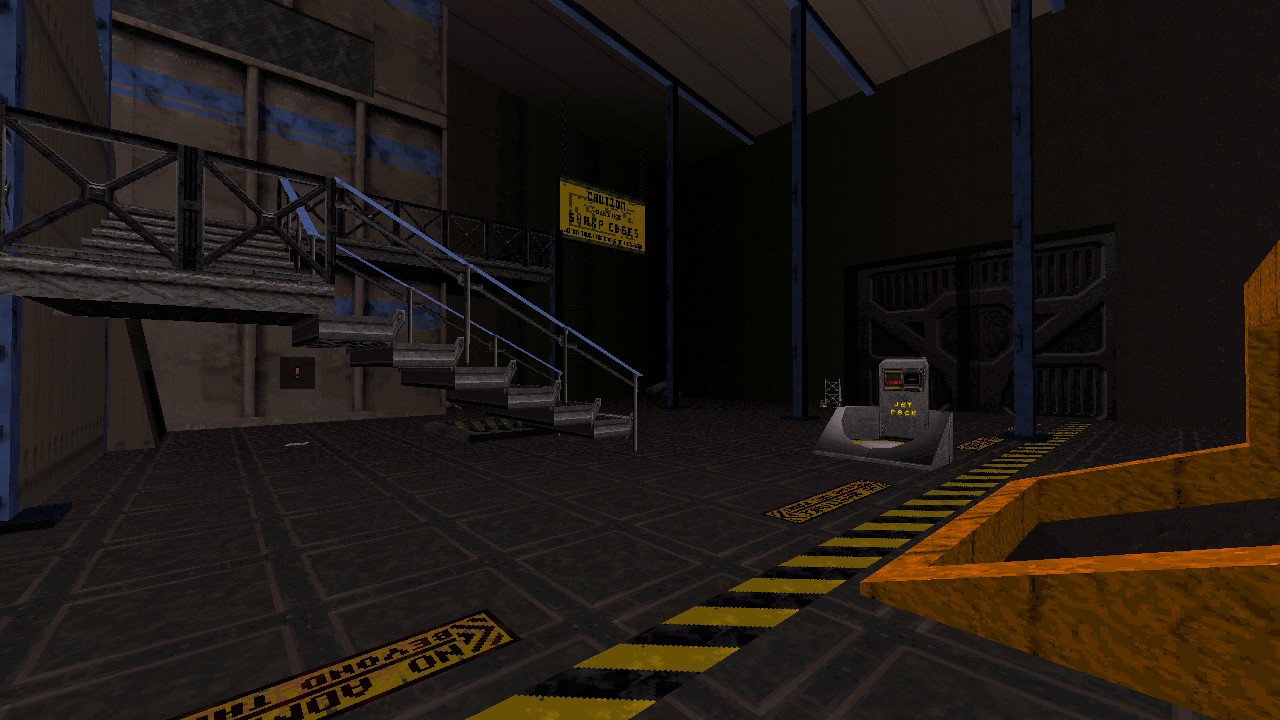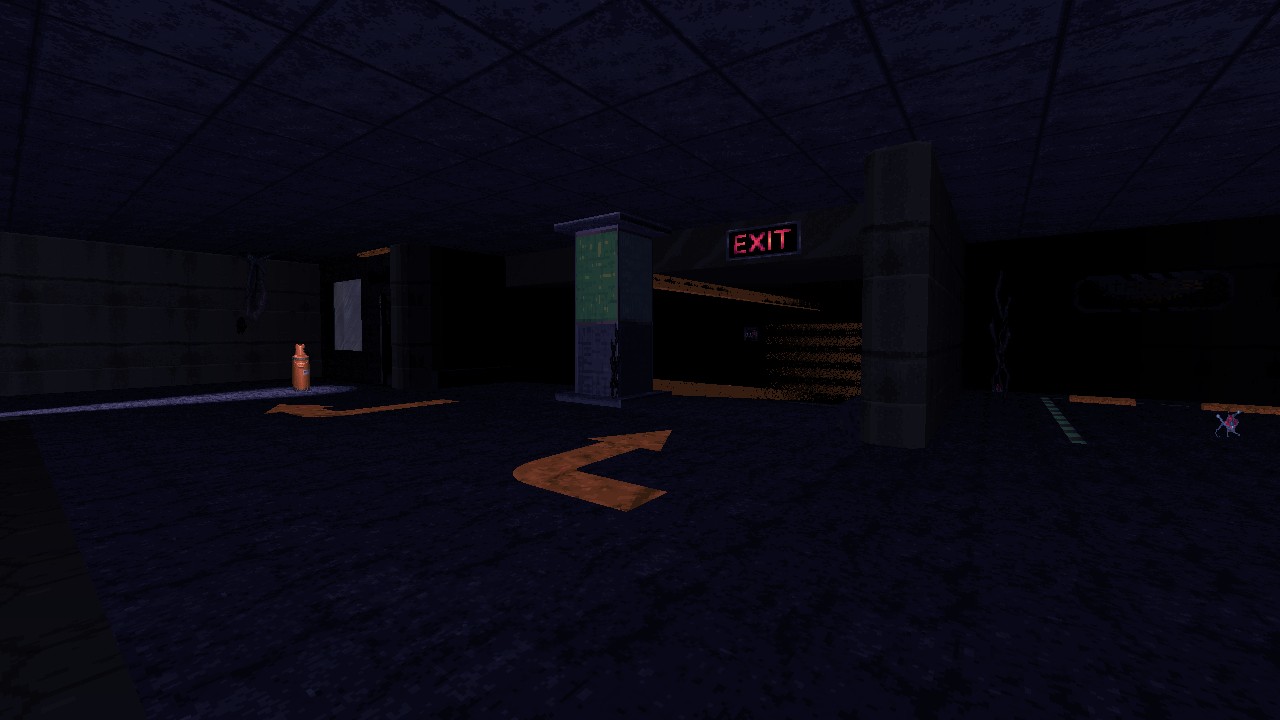Introduction
Enemy forces have compromised the space shield and have begun another assault on Earth, causing seismic disturbances and chemical contamination on various cities. Duke has been tasked to retrieve classified EDF documents and beware of a mirror production facility commandeered by aliens. What appeared as a rote invasion soon reveals something esoteric brewing beneath the surface.
Review
I was thrown off balance many times while playing where upon a series of oddities never quite aligned together and had been treated as if these should be normal occurrences, almost like the whole urban district is trapped within a bubble detached from reality. That goes without saying concerning the nature of levels in a game, however this extends beyond a mere technical notion and seems too intentional how a typical setting has otherwise been presented in this manner. The first signs can be seen when loading into the level as you’re greeted with Duke’s reflection staring back. Mirrors aren’t much call for concern by themselves, but did raise suspicions being placed within an underpass, barricading a passage heading outside the district. Your mission briefing provided by a nearby EDF laptop drops a clue suggesting the aliens might have an involvement with this, but the question remains as to how they’re doing this and for what end goal. The worrying detail is learning that the same phenomenon can be witnessed at the parking lot exits too, as such there’s no other means of escaping the city with every path leading to a dead end. Every surrounding building is an impenetrable wall, not even distant views into other sections can be seen and what remains of a collapsed building still stands strong enough to contain you. Duke is nothing more than a rat caught in a cage.
Aliens have placed the city under lockdown amidst the chaos of their acidic attack, which has now pooled around the central building and is eating away at infrastructure. Roads have since collapsed into the toxic wastes, basements are entirely flooded and some streets have been rigged with tripbombs making traversal more inconvenient. An easy reprieve from combat is also not in the cards as your earliest foes are heavy hitters like Enforcers pouncing straight for you while Troopers snipe from a distance, with bigger ambushes waiting until some momentum has been attained. There’s an awkward Battlelord sentry hiding behind a set of tripbombs who’ll likely be spraying bullets into your rear each time his road is taken. Finding equipment becomes a top priority. To alleviate these struggles the EDF have distributed several logistical support devices that deploy gear and require keys for access. Blue cards provide you with weapons, while yellow cards offer tools like protective boots, scuba gear and jetpacks. Duke’s inventory serves as a lighter form of keys for progressing into hazardous sections, most just help to avoid taking heavy damage but somewhat doable without them, while the jetpack however is essential at certain points. There’s less of an importance around exploring per se, YELLOW: MIRRORS is a dense map but has small real estate and most areas are already locked in some form. Focus leans toward figuring out what is needed at any given time and how to best use what has been provided. Many blue and yellow cards are scattered around the central district for use at your discretion allowing for a little non-linearity, while red cards count toward reaching a milestone. Every other component exists as additional flair to stock up on supplies and a chance for learning background details, found by reading notes that are hard to miss thanks to a hovering icon. These delve into the mysteries and offer some insight surrounding lore crafted for a potential series of levels. Others provide jokes to lighten up the mood, the factory review gave me a good chuckle.

Some of the locations making up YELLOW: MIRRORS are a little unorthodox that help to stand out from the typical carousal of places used in urban levels. There’s an EDF affiliated insurance office avoiding payouts due to alien invasions and a business, with the perfect pun, marketing air conditioning fan units. Of particular importance is a large warehouse for mirror production where our second sign of abnormality can be observed, with notes eluding to a power held within this medium and possibly why the aliens have taken a special interest here. Even glitchier mirror behaviour has been woven in as part of the world, perhaps we’re peeking into planes far beyond human comprehension. Further evidence is found by seeking out the factory owner’s collection of unique mirrors held inside his private museum, utilising some clever BUILD engine tricks how they render sprites not visible from our side of the reflection, showcasing each of their purposes well and giving credence to the concept of there being more than meets the eye. The “Magic Mirror in the Wall” has one of my favourite designs, including the room’s subtle texture and palette transitions to emulate a lighting falloff from bright browns shifting to blue ambient. Stranger yet, our third sign of abnormality come from an elusive person titled The Man in Yellow, having a specific preference toward this colour and painting many instances around points of interest. His lifeless corpse hangs right above the starting area and you’re left with piecing together his actions, reading notes and wall graffiti left in his wake. Was it all a simple case of madness or had there been truth to his words? Following these breadcrumbs will be vital for progression and lure you toward bizarre reveals, some that can also be missed out that provide additional context. Understanding the full picture here will require speculation, a little external research and waiting for its sequel.
Norvak accompanies a 7 minute track composed by him that emphasises all the major themes and actors taking place on stage. With another invasion in full swing as both the EDF and Duke tackle the situation, this is reflected in the music by starting off militaristic, a serious tone like a mission briefing. But as we soon learn of stranger occurrences going on there’s a quick shift into inquisitive playfulness eluding to not only The Man in Yellow, but also to an esoteric presence as if they’re always watching this unfold from plain sight. These two aspects are intertwined while retaining a focus on the objective, while that curiosity still lingers as we piece the puzzle little by little. The music is a calm piece overall, no over hyped action segments or sudden changes in pace, just contemplative thought allowing you to consider options. Deep rumblings and the eventual drumming beats come into play, crashing us back into reality as a reminder of the alien invasion, an ongoing threat despite a deeper mystery wanting to be uncovered. Yet the ever presence of themes built up during the composition never disappear entirely, as if all three groups are now tangled up in the same web. The more I listened to this music the more I appreciate how it highlights the subtleness of each factions involvement and gives them their own voice through the instrumentations.
Conclusion
YELLOW: MIRRORS takes influence from a variety of sources based around gods, horror fiction and conspiracies. Norvak even provids an FAQ to explain each of these, best read after completing the level. The most obvious references come from Robert Chamber’s “The King in Yellow” and its stage play depicted during the story, one that drives people mad after reading it. Funnily enough I’ve been somewhat ignorant of the book before learning about it while playing an indie horror game called Signalis. By coincidence it seems as if several works have since been taking an inspiration from this source material. Maybe there’s a missed opportunity for using “The Duke in Yellow” as a term somewhere!
In truth even after a few runs through the level, I’m still figuring out where everything leading up to and the consequences at the Floron chamber means for the series going forward. As a solo experience the reliance on inventory items is a nice change of pace not too dissimilar to how some of my favourite metroidvania games function, retrieving a necessary powerup to traverse sections otherwise locked off from you. With brute force it’s very possible to get by without some of these and the level has some replay value when thinking about minimal requirements for quicker completion.
One theme I’ve speculated upon depicts a self imposed need or perhaps even obsessiveness toward some goal or object, with several examples all held within this one district; One man with a preference to yellow and the need to paint signs in this colour; another man who both creates and collects mirrors allured by the power they might hold, one even revealing your innermost desires; the aliens obsessive and constant invasions of Earth, despite another man’s need to stop them every single time. In some ways we could consider those of us still playing custom levels for this decades old game we can’t put down, but now I’m getting too far ahead of myself there.



